From Studio To Release: How To Record A Band – Recording Vocals
In the latest instalment of the series, we’re going to be looking at the final piece of the recording stage of the project – capturing vocals. Mike Hillier holds the mic… As with the previous two features (part 1 and part 2)– and don’t worry, you needn’t have read those to understand this one – […]
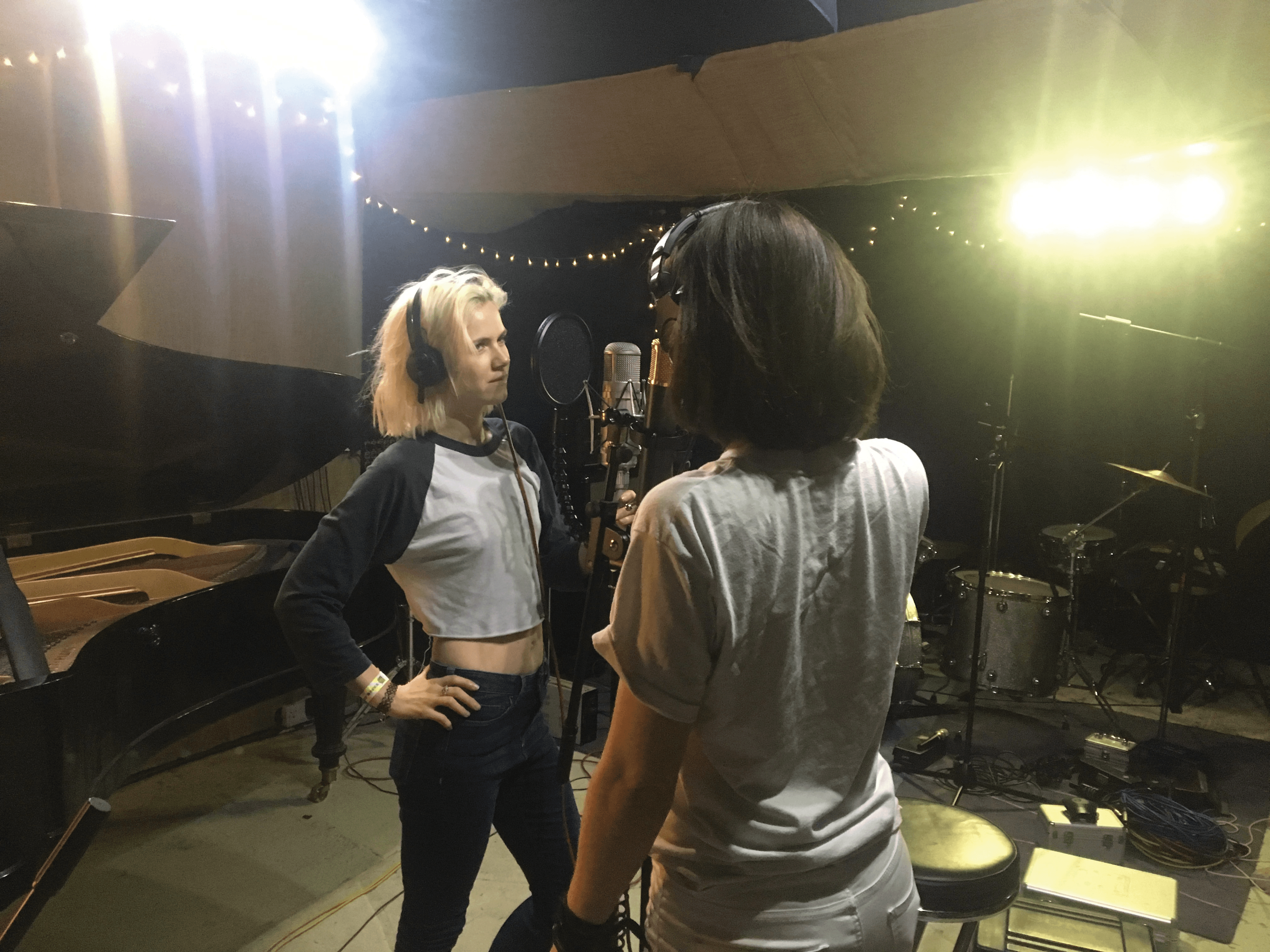
In the latest instalment of the series, we’re going to be looking at the final piece of the recording stage of the project – capturing vocals. Mike Hillier holds the mic…

As with the previous two features (part 1 and part 2)– and don’t worry, you needn’t have read those to understand this one – we’re focusing on the recording of two songs. The first is Fade Out, an electro-rock track by Lock, which features two female vocalists, Edie and Gita Langley, sharing lead and backing vocal duties equally. The second track is called Shore, by Reptile, which has a single male lead vocalist, Luke Cloherty, who is joined by additional backing vocals from Bill Gough and guest female vocalists Nat Mortimer (The Buffalo Cartel) and Morgan Sas.
Mind over matter
Vocals are usually the final part of the recording process, as it is important for the vocalist to have both a steady timing to sing along to, provided by the drums, as well as a well-structured harmonic progression provided by the rest of the instrumentation. It would, of course, be possible to record the vocals once the primary rhythm section (in the case of these two songs, that would be the drums, bass and guitar) is recorded; especially if the other instrumentation has to find space around the vocal. But even in these cases, the vocal is usually left to the end for psychological reasons – to help get the best performance from the vocalist – while a guide vocal is used to help build the arrangement.
“The vocal is usually left to the end for psychological reasons – to help get the best performance”
Psychology and mood play an important role throughout recording, with some musicians needing the producer/engineer to tease out their best performance by massaging their egos, while others will require a completely different treatment. Some musicians take criticism well, taking everything on board and responding with better performances, while others need to be gently nudged in the direction of a better performance. The art of production lies in knowing how to deal with each musician individually. This applies doubly so to vocalists, and having a great-sounding backing track to sing along to can be the difference between a dull and lifeless take and the performance of a lifetime. Consequently, some producers try to set the mood by dimming the lights and bringing in props such as candles and incense to try and create a comfortable place for the vocalist to perform in.
Vocals are an instrument, too
When setting the mood, it is also important to consider the vocalist as an instrument that must be cared for. Just as temperature or humidity changes can stretch or compress the material of an acoustic instrument (changing its acoustic properties and sometimes even its tuning), your singer’s vocal chords can be similarly affected – not only by atmospheric conditions in the studio, but also by the diet of the vocalist.
Dairy products, such as milky tea or coffee, should be avoided, as dairy will cause the vocal folds to become coated in phlegm, therefore requiring more air pressure to make them vibrate. Soy milk has the same problems, but almond milk can be a suitable alternative. Ideally, the caffeine in tea or coffee should also be avoided, as this is a diuretic and will therefore result in a dry throat. Similarly, and perhaps more so, alcohol should be avoided, as it, too, is a diuretic.
Fruit juices (at least those not high in citric acid, so avoid oranges and lemons) are a good choice for vocalists, and are actually better at keeping the vocal chords hydrated than just water, as they will cause the salivary glands in the throat to lubricate the vocal folds. Although you should avoid too much sugar, so perhaps try watering down the juice a little. Some vocalists also swear by hot water and honey, which is doubly beneficial, as the warmth will help to open the throat. Just as an athlete will stretch their muscles before competing, so a warm larynx will aid a vocalist to perform better.
As well as having to consider the drinks on-hand during a session, it’s important to consider what food is being eaten. A large dinner just before a vocal session is likely to result in the singer’s diaphragm having to push harder against the stomach, which at best, is uncomfortable and at worst, can cause cramp.
A healthy meal one or two hours before a vocal performance is ultimately the best preparation, avoiding anything dairy-based or containing a lot of salt or spice.
Fairchild 660
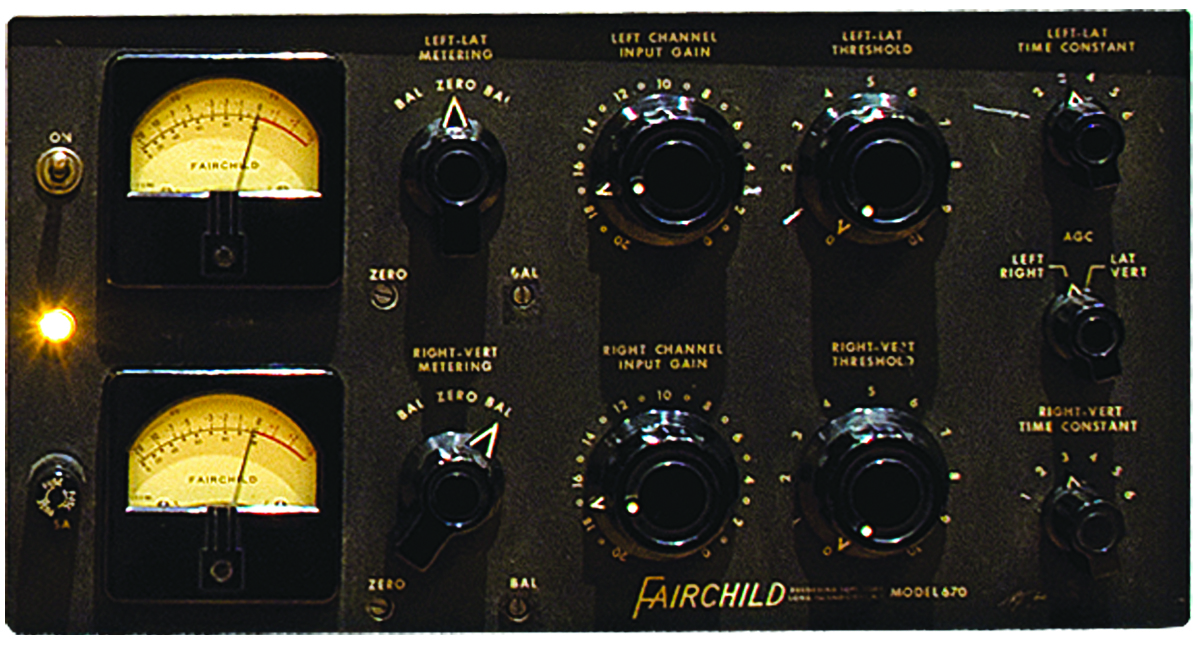
The Fairchild 660 is the mono sibling to the famous Fairchild 670, designed by Rein Narma at Les Paul’s request and licensed to Fairchild, and as such is one of, if not in this case simply the most, highly revered and sought-after compressors in the world. They don’t change hands very often, and when they do, the price tag is five figures, even in poor condition. The 660 at Hackney Road Studios has been my secret weapon for vocals from the moment I stepped into the studio for my first session there. There’s not a single vocal I’ve recorded that hasn’t benefitted from the extra colouration the 12 tubes and eight transformers in the 660 circuit (although it is worth nothing that not all of these are in the audio circuit) add to the signal, even with the threshold set to achieve no gain reduction at all.
Headphone Mix
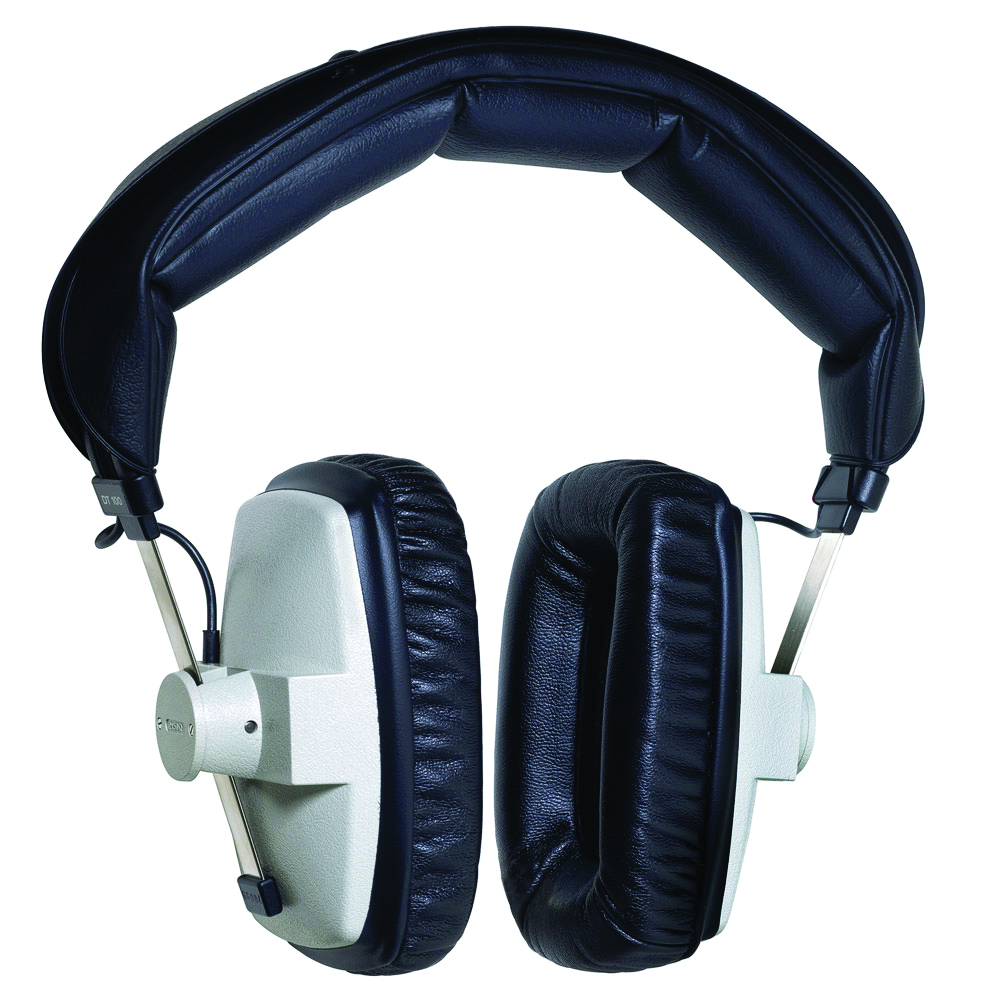
With the vocalist’s mind and body suitably catered for, we can start to consider the technical aspects of the vocal take. The first thing to consider is the headphone mix.
Give the artist your best set of closed-back headphones – most studios will have a selection of Beyerdynamic DT 100 headphones and while these will work fine, I find you get more confidence from the vocalist with a more accurate set of cans. So I carry a set of Sennheiser HD 280s with me for vocalists and only resort to using the studio cans when recording more than one vocalist at a time.
In larger studios, you might have access to individual monitoring systems, enabling each musician to create their own unique headphone mix, but in most smaller studios, you’ll be creating the headphone mixes using aux outputs from the console. Even in this case, though, it’s good to be able to give everyone their own headphone amp, rather than simply using passive splitters, as this will let everyone set their own headphone volume. This is especially true when using different headphones for each musician, as different headphones can reproduce considerably different sound-pressure levels from the same signal, particularly if the different headphones have different impedances.
“A dry vocal can be unsettling. A bit of reverb can really help a vocalist ease into a performance”
I also find it useful to have a set of headphones in the control room with me – ideally of the same type as the artist – so I can listen to the headphone mix as I dial it in. This makes it much easier for me to hear which sounds may be masking the vocal in the mix and dial these back, rather than always opting to turn the vocals up.
I also like to give the artist some reverb or delay – or frequently both – in the headphone mix, so they’re not hearing themselves completely dry. The dry mic’ed up signal is very different to what we hear when we listen to ourselves sing and, especially for inexperienced vocalists, listening to this dry vocal can be unsettling. So, a little reverb can go a long way to helping the vocalist ease into their performance. It’s not too important to dial in the perfect reverb at this stage, so I tend to just use Avid D-Verb as it is built into every Pro Tools system, is DSP efficient, and very quick to dial in – in fact, I’ll often just use the ‘Medium Hall’ or ‘Vocal Plate’ presets. For tracks which need drier vocals, I often use a quick ping-pong delay, dialled in subtly to give the singer some dimension to what they’re listening back to, without flooding the vocal in reverb.
Be careful not to dial in too much ambience in the headphones and keep any modulation off, as this can lead to the singer pitching slightly out. Use your own judgement in your own headphones to pull the reverb back if it becomes noticeable, and don’t be afraid of compressing, or even de-essing the reverb send to prevent any particular notes or sibilance from swamping the headphone mix.
Edits
Rather than leaving everything to strictly delineated phases, I will often edit as I go along. I’ll create a playlist track called ‘COMP’ in which I paste any phrases that I like from each vocal take as we go along. This way, I don’t have to try and remember which were my favourite bits each time. I’ll also take quick notes on a pad of paper for each pass, with what I did and didn’t like, so when it comes to editing, I don’t have to listen several times to all of each take.
Mic Auditioning
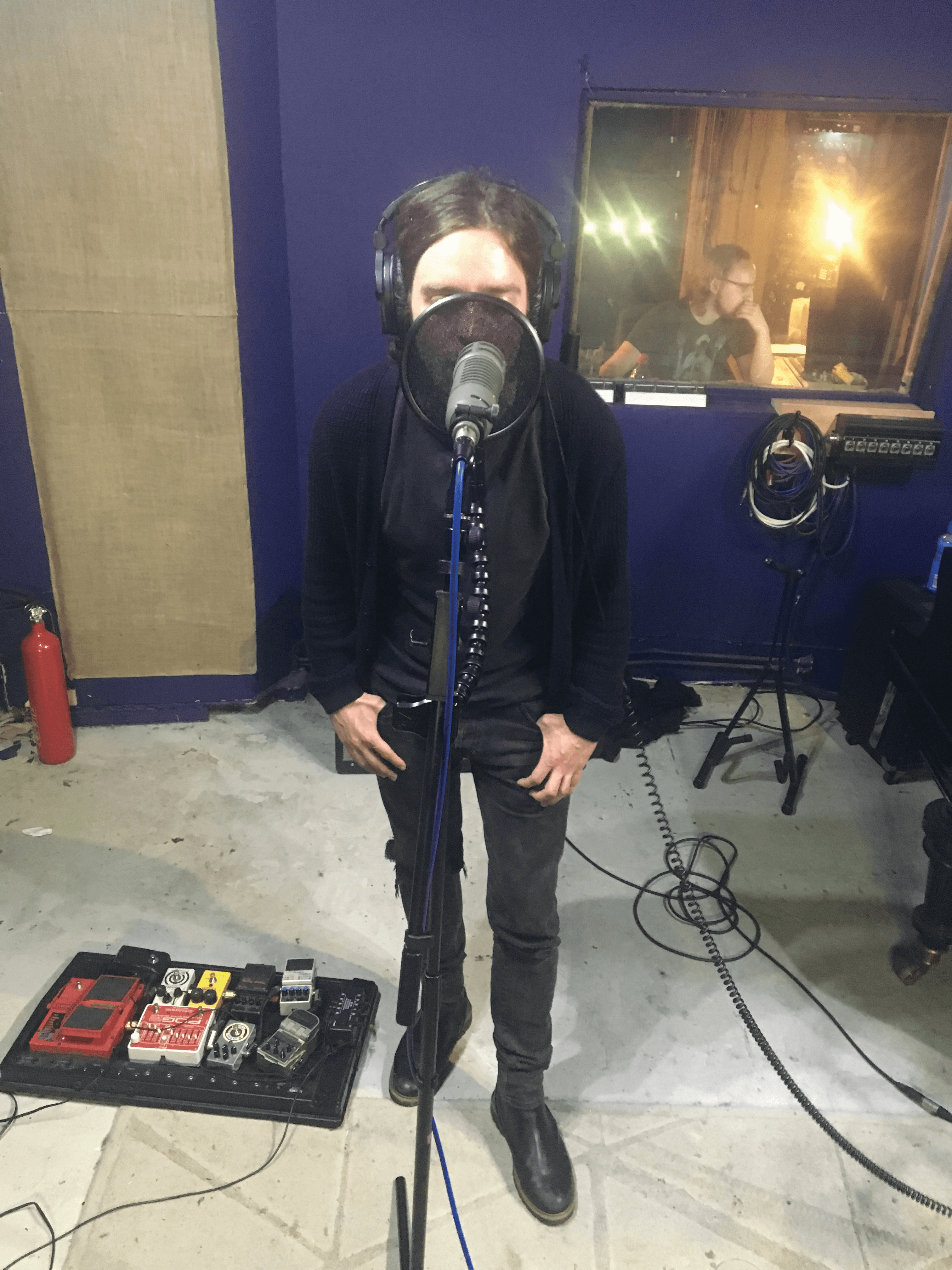
For Fade Out by Lock, Edie and Gita had in mind a very wet vocal sound and had given me some Warpaint tracks to listen to in advance as a reference for the vocal. With this in mind, I dialled in two instances of Waves’ Renaissance Reverb on auxiliary sends, one with a fairly quick mono plate and the other with a slightly longer, wide stereo hall.
I then set up a selection of microphones with the capsules as closely aligned as I could get, with the Pop Audio Pop Filter as a target for Edie and Gita to sing to. I then had them take turns singing into each mic. Hackney Road Studios has an enviable selection of microphones, but I choose to narrow this down to my favourite three large-diaphragm condensers; an AKG C12 VR, Neumann U47 and a Sony C-800G. Each of these three mics has a unique character, and I wanted to pick out the one which most matched the voice of the vocalist. With two vocalists, I felt it was important to try and capture something different from each, to enhance the sonic difference between the two sisters. So after listening and comparing each of the microphones on each of the singers, we also listened to the two singers together, comparing the mic pairing with the voice and how it worked with and against the other voice.
“Trying out every conceivable configuration only gets in the way of the musician making music”
In the end, we opted for the AKG C12 VR for Edie’s vocal and the Neumann U47 for Gita. The C12 VR is a dark-sounding microphone, especially compared to original C12s, with a smooth, even-sounding midrange, and a warm, enhanced low-end. Edie’s vocal has a lower resonance to it than Gita’s vocal, and the C12 VR enhanced that, while at the top it took out a slight edginess that the C-800G brought into focus.
For Gita’s vocal, we used the Neumann U47. I particularly liked how this microphone contrasted the C12 VR on Edie’s vocal, still warm sounding in the low end, but with more presence in the midrange.
Both microphones were routed into a pair of Don Classics NV73 preamps, a 500-series clone of the Neve 1073, then patched into a Pultec EQH-2 – a similar passive EQ to the more well known EQP-1A, with both boost and attenuation on the high end (where the EQP-1A has only boost) – and then into a Fairchild 660 compressor.
I tend to patch things quite quickly when recording, relying on my knowledge of each piece of gear from previous trials, rather than testing each preamp, EQ and compressor on each vocal. As much fun as it can be in the studio to try out every conceivable configuration, I find that this only gets in the way of the musician making music. And I’ve always relied on the principle that I’d rather capture a perfect take imperfectly, than an imperfect take perfectly. Put another way, I’d much rather record a great vocal with an SM58 into an old Mbox, than a poor vocal with a million-pound signal chain. Sure, it helps to have the great signal chain, too, but every minute you waste getting the artist to do another take just to test the gear is a minute wasted in search of the perfect take.
The studio only has one each of the Pultec and Fairchild, so these were repatched between each vocalist’s take – and as they’re situated in the second control room in the studio, which thankfully wasn’t being used that day, I had my assistant Indi run to the other room each time to adjust the threshold on the Fairchild if required. I wasn’t doing much processing with either unit, using both more for colouration than EQ or compression. I did use a little boost at 5kHz on the Pultec, while the Fairchild was set at the second-slowest time-constant and with the threshold set to only tickle the louder sections of the vocal – with Indi keeping a close eye that the gain reduction meter didn’t ever leap past around 3dB.
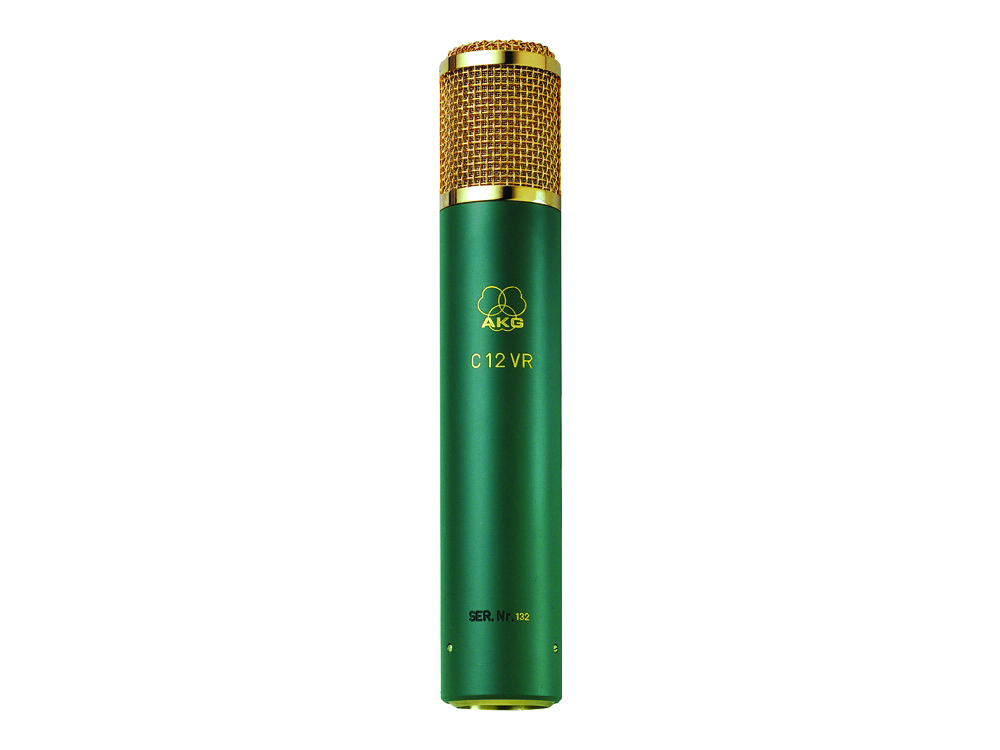
The vocal booth at Hackney Road Studios is attached to the second control room, and we weren’t able to use that on the day. So, rather than try and blanket my way into a fake vocal booth in the live room, I decided to use the room to my advantage. Since the vocal was going to end up quite ambient anyway, I decided to leave up the room mics from the earlier drum and instrumental recordings. This isn’t something I often do, but it can help to give the vocal an open, realistic quality, unlike the more in-your-face sound of a close mic in a dry vocal booth.
With all of these considerations taken into account in advance, the actual process of recording the vocal takes themselves becomes quite quick and painless and the preparation enables me to focus on the details of the vocal itself. Are we getting the right emotion into each word? Are the words clear? Is the melody strong enough and does it develop the harmony of the song? These can become my focus, rather than having to worry about any technical issues which may be holding us back.
The structure for the track is for Gita to sing the first verse, and Edie to sing the second, with the backing vocal parts being done in reverse, with Edie singing backing over Gita’s verse, and vice versa. Then, during the chorus parts, the two voices would sing lead together.
“Using the room mics from earlier recording sessions can help to give the vocal an open, realistic quality”
With the Warpaint tracks as a reference, as well as listening to some of Lock’s other releases, I knew I wanted quite dense vocals, so I made sure that we captured multiple good takes of each pass, to use for double-tracking.
As the session progressed, I was constantly keeping a running rough mix going on the studio’s SSL E-Series 4024 console. This enabled us to all listen in context and try to decide if anything else needed to be added, without waiting until halfway through the mix to decide to overdub some additional vocals. In this instance, Edie and Gita wanted to try an ad-libbed vocal during the middle-eight section. The idea was for both of them to add some spoken-word softly underneath the instrumental mix. Rather than send them back into the live room one at a time to record this section, I decided the ad-libs would probably work better if they were able to jam off each other in the live room. So I set up both mics at 180 degrees to each other, and had the girls perform live together. This meant that Edie’s vocal mic wasn’t being processed by the Pultec and Fairchild, but for the middle-eight ad-libs that’s something I could live with, knowing I could always process them through this signal chain later, or even use plug-ins emulating it in the mix.
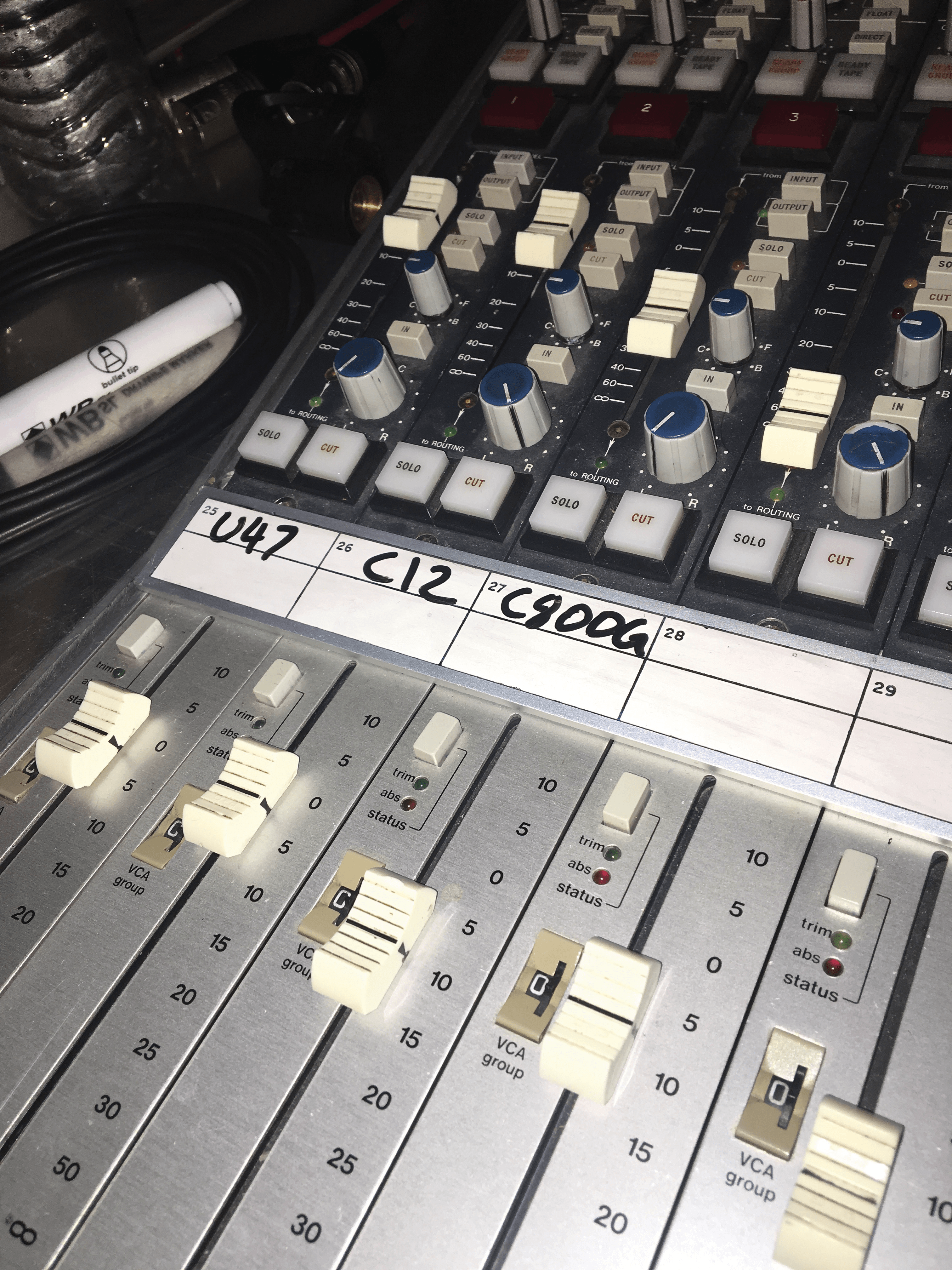
Rough and Ready
The most expensive is not always the most useful.For the vocal on Reptile’s track, Shore, I wanted a vocal sound that a had more of a rough-around-the- edges grit to it than the layered, reverb drenched, vocals of Fade Out. So, rather than set up several expensive large-diaphragm condenser microphones, I instead opted for the humble Electro-Voice RE-20, a dynamic cardioid mic, which incidentally meant the only condenser mics used on this entire track would be the two Neumann KM 84s on the piano.
The RE-20 has less of an expanded, hyped top-end than a large-diaphragm condenser, and the dynamic capsule means that the signal benefits from a little compression on the way in, too. While a large-diaphragm condenser will have more nuance than the RE-20, this kind of track doesn’t require that kind of detail on the vocal and a more simple dynamic mic will sit more readily in the track.
“I opted for a less grandiose and slightly more aggressive-sounding signal chain for Luke’s vocals”
As with Lock, I gave Luke a rough mix in his headphones, as well as adding a small amount of plate reverb from Waves’ Renaissance Reverb before asking him to perform. We already had several takes of him singing along with the live performances in the control room with a Shure SM58 and I have nothing at all against using those takes if the performance was there. Neither the bleed from the studio monitors nor the use of the SM58 without any pop filter would be enough to stop me from using these takes if I thought the performance was worth it – but in this instance, I knew we could get a more powerful performance with a little coaxing in the live room.
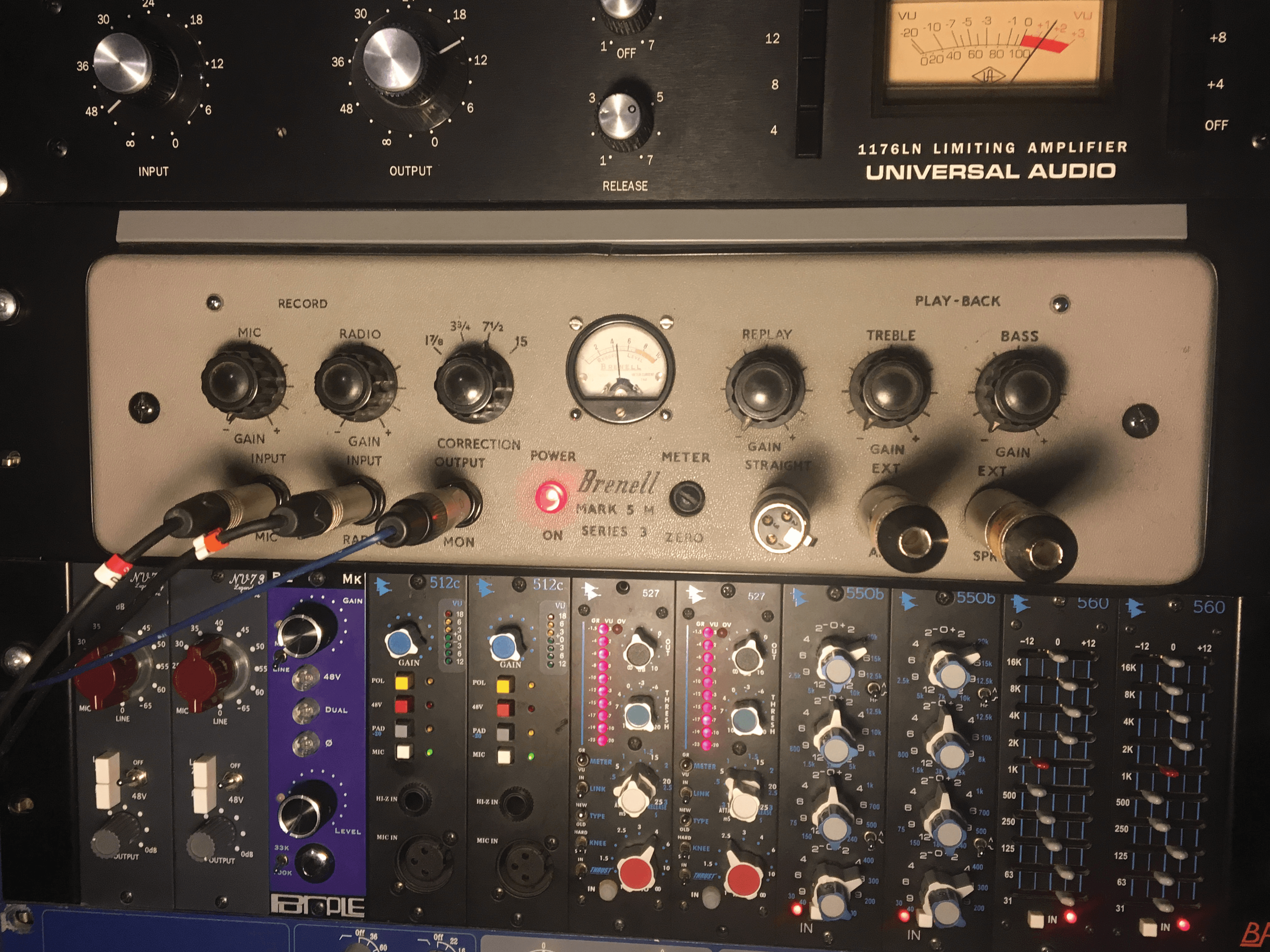
Rather than the Pultec and Fairchild signal chain I’d used with Lock, I opted for a less grandiose and slightly more aggressive-sounding signal chain for Luke’s vocal. The RE-20 was patched into the same Don Classics NV73 preamp, and from that out into a Neve 33135 EQ, and a Universal Audio 1176LN at a 4:1 ratio. The Neve 33135 EQ was developed as a broadcast EQ, and many were used by the BBC in its Neve consoles. Since the BBC stopped using these consoles, many of these modules have been picked up by studios and converted to be used as rackmount mic-preamps/EQs. The output of the original models was unbalanced, as the balancing transformer was built into the console rather than the EQ. However, most studio models, including these, have additional Marinair transformers on the output, adding further weight to the signal. I find the EQ itself to be more useful than the EQ on the more popular 1073, particularly as it has high- and low-pass filters switchable from 27 to 270Hz (high pass) and 18kHz to 3.9kHz (low pass), in addition to high and low shelves and a superb-sounding single mid-band. However, while I prefer the EQ on these modules to the 1073 EQ, I still prefer the preamp stage of a 1073, so opted to use the line-inputs only on the 33135s, along with the Don Classics NV73.
“For distorted vocals, try recording the singer with an amplifier in the room with them”
Luke’s vocal starts in his lower register, before switching to a higher register towards the end. So, I opted to record these two different parts to different channels, enabling me to more easily EQ and compress them differently later on. This also gave us the option of using both registers in the middle section, by layering the two over each other.
In the Toybox
While at the studio and waiting for our guest vocalists to show up, I managed to find a little time to quickly edit the main vocal. This meant I was able to process the vocal through some of the studio’s outboard as colouration options for when it comes to the mix. This is a process I do a lot of as part of my mix-preparation phase, and I’ve collected a reasonable selection of outboard colouration tools for this purpose – but while in the studio, it’s always handy to be able to try out a few of the ones available there.
Hackney Road has two such units I’ve found useful in the past; a Federal AM-864 compressor/limiter and a Brenell Mk.5M Series 3 tape amp. The Federal AM-864 was designed by the Federal Television Corporation for the US Army and Air Force as an AM radio broadcast limiter. It is essentially a vari-mu valve compressor, with a very strong vintage vibe, and it can do magic with guitars, bass and vocals. The Brenell was once a reel-to-reel tape machine, but has been modified for use as a valve line amp, without the need to print to tape. There are a number of ways of running through this circuitry and it has a wonderful lo-fi edge to it which can help to push the midrange of a vocal or guitar forward in the mix.
I ran the recorded and edited vocal out from Pro Tools into both of these units and brought them back up on the console ready to print back in, solo-ing each in turn while I tried to find a particularly exciting setting on each. The Federal ended up being a little noisy for my liking, and I decided to only record back the Brenell on this occasion.
Auto-Tune Vocals
If you’re going for an overly affected Auto-Tune effect, like the T-Pain sound, it’s important to use the effect in real time with the vocalist getting plenty of the auto-tuned vocal in their headphones. This can help them to pitch the notes off in such a way that Auto-Tune has to work hard to bring it back into line. For more natural tuning, though, it’s best to keep pitch-correction well out of the way and work with the vocalist to get a better performance in the room, as any auto pitch correction added to the headphones is likely to put off their natural pitching
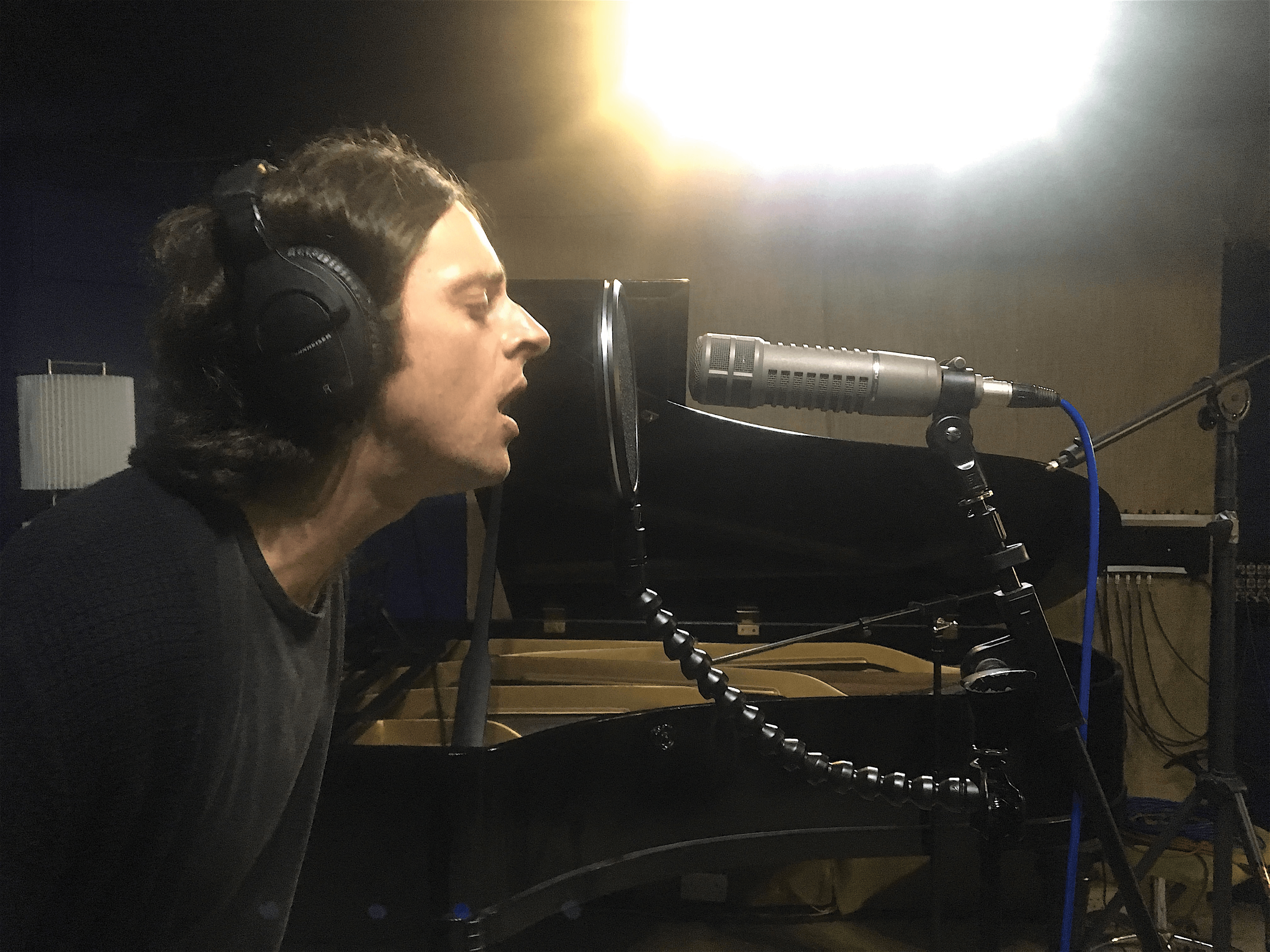
Less control, more feel
The final piece of the puzzle for this track was the addition of backing vocals. The band wanted to use female vocalists, to bring a different timbre to the backing vocals, rather than simply layer up their own vocals. In order to do this, they brought in two guests, Nat Mortimer and Morgan Sas, to sing the backing parts. The first backing-vocal part was simply an echo of one of the lyrics: “Aspirations, like the waves, are knee-high”, for which I was only going to use the two female voices, while the bulk of the backing vocals was a simple repeating pattern of “Aahs”, for which I also wanted Luke and Bill from the band to join in.
“By putting everyone in the room together, I anticipated a more feel-based performance”
When working with grouped backing vocals like this, there are two ways of approaching the recording. Firstly, there’s the option of recording each vocalist individually, which takes the most time, but gives you individual control over the balance, pitch and timing of each singer. After editing, this method can sound incredibly tight, but it can also sound overly forced. It’s perfect for R’n’B or pop vocals, where this super-tight, over-produced, backing vocal is the order of the day – but for a track in which we’d deliberately avoided use of a click track and were pushing a more rough and less polished vibe, I felt it wasn’t going to suit our production. Instead, I set up a pair of Coles 4038s in ORTF arrangement (with the two capsules 17cm apart and angled at 110 degrees to each other), and stood all our vocalists around the mics to capture everyone at once. This method offers me less control over individual balance, pitch and timing, but by putting everyone in the room together, I anticipated a more feel-based performance.
Working with the performers as a group does take a little more time to get right and we did a whole load of practice takes so that Nat and Morgan, who hadn’t heard the track before, could learn their parts. For the final “Aahs”, I ended up stood in the live room with the four vocalists, conducting the performance, while Indi took over the control room – as the timing, especially the slow down towards the end, was proving a little tricky.
All the files for all the vocal recordings for both songs, including the pass through the Brenell tape amp, are included on the cover disc, for you to hear exactly how the recordings sounded straight out of the studio. In the next part of this series, we’ll be looking at the mix-preparation stage for the recordings: including all the simple tasks like adding markers, creating groups, routing channels, colouring all the various channels and clips, as well as what editing and processing I perform – all before I consider anything mix-related.